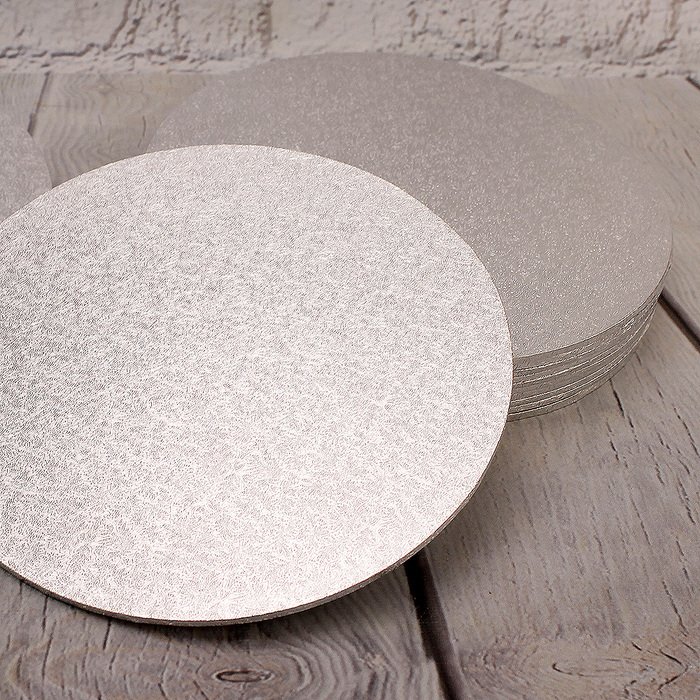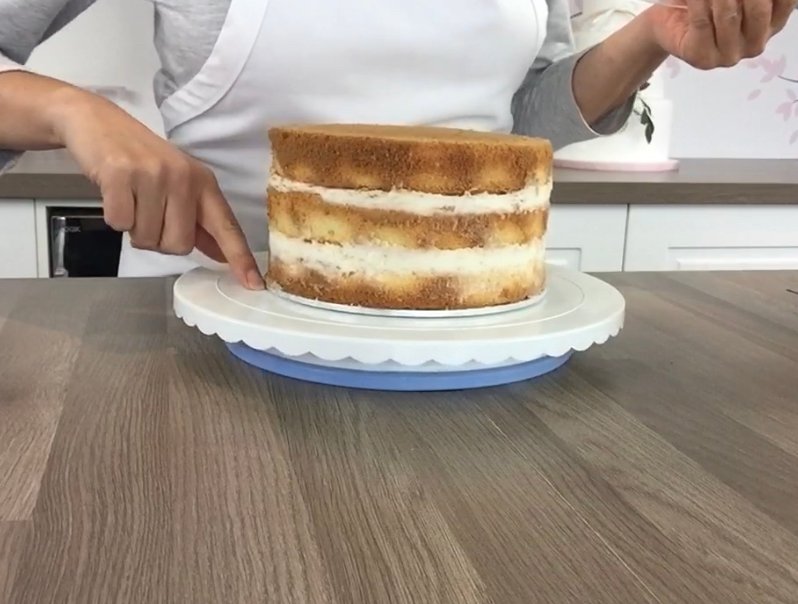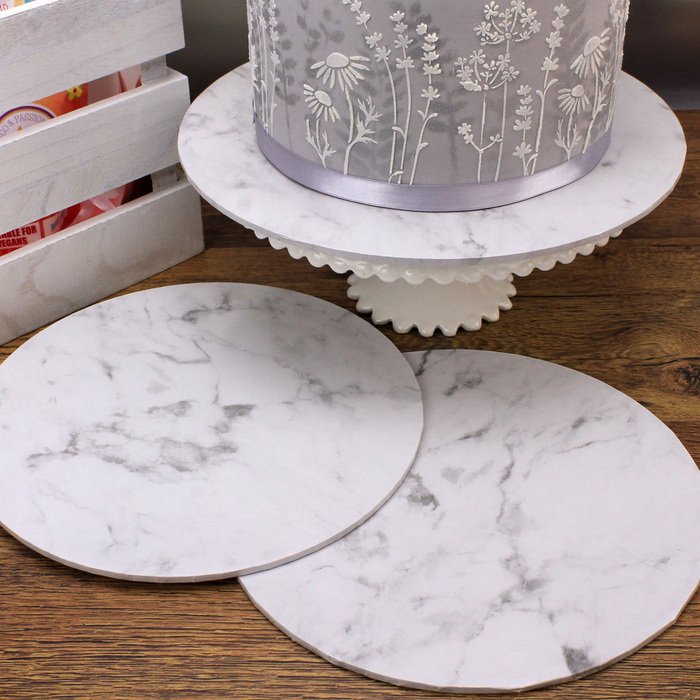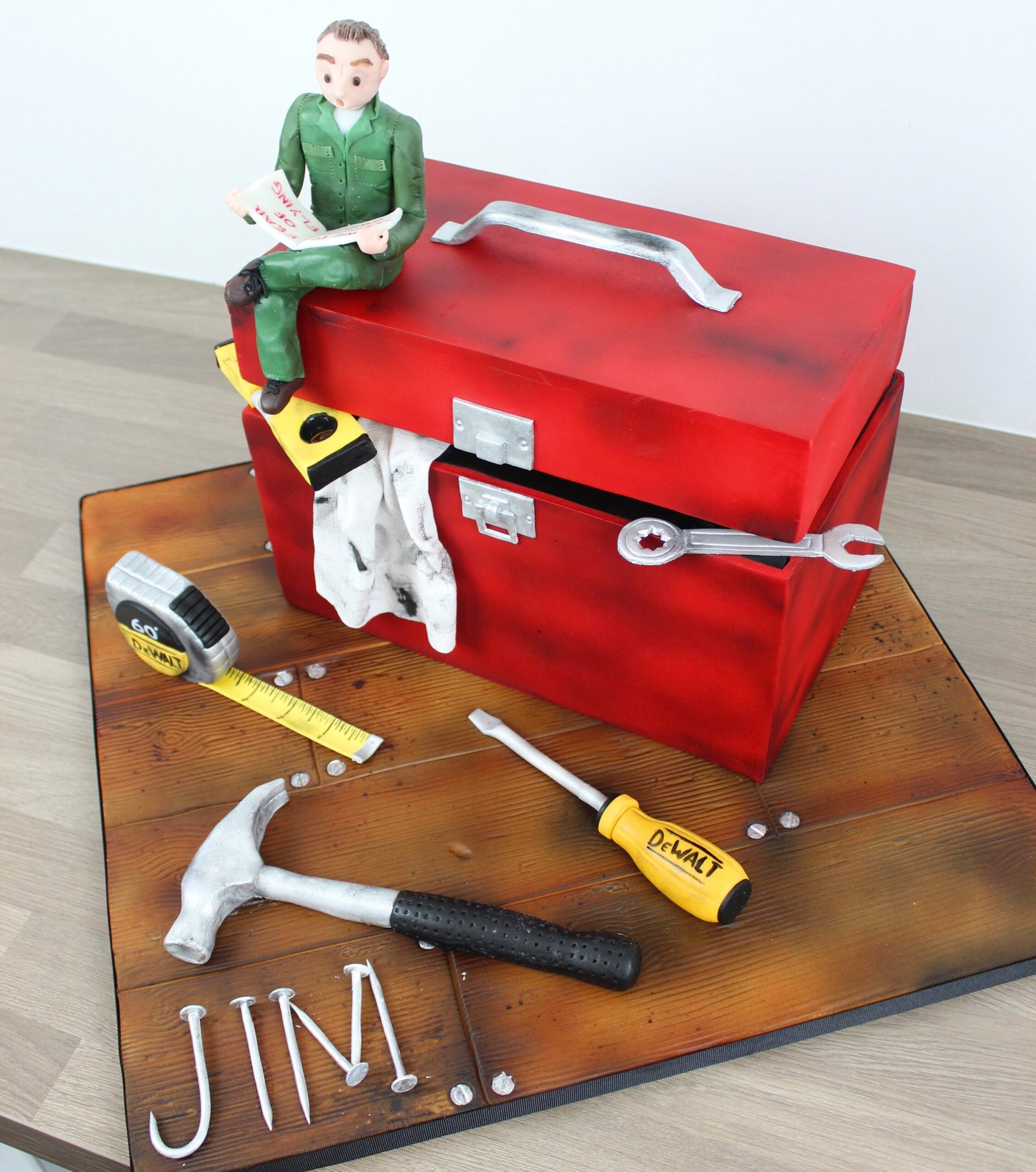THE FOUNDATION TO YOUR MASTERPIECE
Cake boards may seem like quite an insignificant commodity when it comes to cakes, more often than not your focus is going to be on the finished look of the cake. However your choice of board really is quite important – they are after all, the key element of keeping your work of art standing.
There are two types of boards to consider for your cake, the board that each tier goes on (even if it’s a single tiered cake) and the board that the whole cake goes on. Let’s go through this

Boards for each individual tier
As well as the main base cake board, each tier (even if single tier) has it’s own board that is the same diameter as the tier.
Firstly consider the of type of cake so you know what thickness of board to choose. For example, if it’s a standard height sponge cake, a tall barrel cake, or a fruit cake. These will be quite different in weight, and that will affect your choice of cake board. If I have a light cake, or a barrel cake (assuming it’s sponge) I use a 4mm hardboard.
For little cakes such as 5″ in diameter you can actually save a bit of money and get away with a card one which is basically that – card. Anything bigger though and you risk it bending, 4mm is your minimum!! For a heavier cake such as a fruit I would strongly recommend a 12mm drum, don’t forget that a large fruit cake can come in at several kilos.

Next the diameter. These boards are going to be hidden, these are not your decorative ones, they are purely to provide support for your cake whilst you decorate it, then later they will be the floor in your cake that sit on your dowelled tiers stopping any weight on the bottom tier.
I always choose the boards at exactly the same diameter as my sponges, this is illustrated on the picture above. If I bake an 8″ sponge, then I buy an 8″ board (so it matches my 8″ ganaching plate). If your sponge doesn’t shrink enough to provide that few mm of space between your edge of the board and the side of the sponge for your ganaching or buttercream, then trim a little bit of the sponge with a knife. if you want to understand more about this I cover trimming and ganaching in my Flawless Finish Online Course
So, you will need to buy a board that is the same diameter as your sponges for each tier for your cake. For example if you are making a two tiered cake with the top tier being 6″ and the bottom tier being 8″ you will need to buy one 6″ and one 8″ round board (probably a 4mm hardboard – unless it fruit!) I buy my boards from Cake Craft World
Boards for the whole cake
This part is really about cake presentation, because in terms of structure 9 times out of 10 I use a 12mm drum, mainly for strength, but also so I can put a nice ribbon round which massively changes the final look of a cake. In my opinion a cake board with no ribbon is like tiling without grouting!

Having said that, I’m about to go back on my word slightly as there is a new type of board that’s becoming more readily available and that’s the patterned masonite board. They’re only 4mm thick so only go up to 10″ in diameter, but they are wipeable and therefore reusable. the patterns I have seem so far are marble, wood and grass and they look amazing, take a look! here!

Generally, when choosing a board shape and size for my whole cake I consider whether or not it is going to become part of the decoration, usually with wedding cakes for example, it’s just a “bottom tier” and usually covered in the same white/ivory icing you have covered the rest of the tier with.
However with celebration/novelty cakes I often like the board to be part of it. Take a look at this tool box cake for example, the board sets the stage being the wooden “workbench” for the tool box

Summary – Cake Board Choices
Hopefully this has given you some ideas to think about. Please do comment or ask any questions. Are there any tricks and tips you’d like to share? We’d love to hear them!
In summary
- Think about the weight of your cake, for fruit use a 12mm drum
- Think about the diameter, each tier should have it’s own board that is the same diameter
- Consider whether your cake will stand out from the cake board and cake stand or whether you want to present them as complementary items
- Be consistent in the relative sizes of your cake boards when presenting a multi tier cake, particularly with simple wedding cakes
- Always put a ribbon round your board after you have iced it!
Bake happy!
Claire x

Hi there,
Just reading through about boards & am I right in reading you say that you use a board for each tier even if its a single tier, if thats right in what I’m reading how do you stick the card to the main board please?
I love your website 🙂
Hi Cathy! I use ganache usually xx